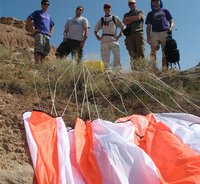
For the past three years, Weber State University has been using inexpensive high altitude balloons to access extreme atmospheric environments above 100,000 ft. The High Altitude Reconnaissance Balloon for Outreach and Research (HARBOR) is a student-led team of engineers and researchers that provides a platform for exploration of the atmosphere from the surface to altitudes approaching 125,000 feet. These balloon systems are designed, constructed and flown by the students themselves. They are inexpensive to construct, are built with common electronic and hardware components that are easily purchased from commercial vendors, and can be launched and recovered in a single day. The systems are reusable and can be flown many times, allowing students to fly many new experiments during their student lifetime, or to fly a single experiment many times to acquire extended scientific data sets. I’ll discuss the results of the last three successful flight seasons, and give an overview of how students and faculty can partner to start a high-altitude ballooning program for experimental access to Mars-like environments and other ideas for using balloons to support mission-driven experiments in astrobiology.
 Getting Under Europa’s Skin
Getting Under Europa’s Skin Tracing Formation and Evolution of Outer Solar System Bodies Through Stable Isotopes and Noble Gas Abundances
Tracing Formation and Evolution of Outer Solar System Bodies Through Stable Isotopes and Noble Gas Abundances Photosynthesis, a Planetary Revolution
Photosynthesis, a Planetary Revolution Xenon: King of the Gases
Xenon: King of the Gases